

07/2005
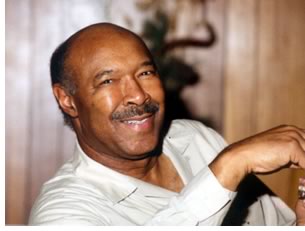 Charles I. Bryant, FAIA,
a leading figure in Washington, D.C., architecture for four decades,
passed away June 7 of a brain aneurysm at his office. The older half
of the two-brother Bryant & Bryant architecture team, Charles was
the surviving principal in the firm the siblings established in 1969,
now Bryant Bryant Williams PC, one of the oldest African American firms
in the country.
Charles I. Bryant, FAIA,
a leading figure in Washington, D.C., architecture for four decades,
passed away June 7 of a brain aneurysm at his office. The older half
of the two-brother Bryant & Bryant architecture team, Charles was
the surviving principal in the firm the siblings established in 1969,
now Bryant Bryant Williams PC, one of the oldest African American firms
in the country.
Bryant’s commissions topped 1,000. For more than 20 years, the Bryant organization has been the architect of record to the University of the District of Columbia and continues to provide professional services to the school. The work there includes the master plan for the 21-acre urban campus with 1.2 million square feet in 10 separate buildings. The architects also completed the student center, administration, engineering, fine arts, and science buildings, and the instructional resources center. The Bryants also left their mark on the city’s K-12 landscape with their design for Dunbar Senior High School and the school’s 1,800-student campus, which the U.S. Commission of Fine Arts cited for its innovative design with three “academic houses,” 100-car parking garage, Olympic-size pool, and full athletic facilities.
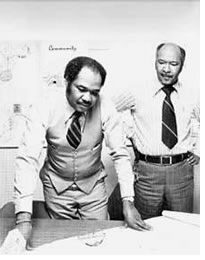 We lost a giant
We lost a giant
“We lost a giant,” says Marshall Purnell, FAIA, of a mentor,
who, during his 45-year career, advised hundreds of architecture students
and engineers who eventually went on to establish their own successful
firms.
“He was always very willing to share with others, particularly with younger architects, how to get business and what business is out there and what’s available,” recalls this year’s Whitney Young Jr. Award recipient Stanford Britt, FAIA. “I was always amazed whenever I met him how open he was about sharing his experience with other architects. He didn’t hold back with anybody. He was the consummate teacher.” He also was a professor, critic, and mentor in the architecture schools at Howard, Morgan State, UDC, and other Washington-area programs.
Purnell praises the late architect’s breadth of projects and says he modeled his own practice on that of Bryant’s. “He was an inspiration to someone starting out.” Bryant’s work includes commercial office buildings, shopping centers, rapid transit stations, wastewater treatment plants, firehouses, libraries, hospitals, convention centers, moderate-income housing complexes, and urban master planning work in the U.S. and abroad.
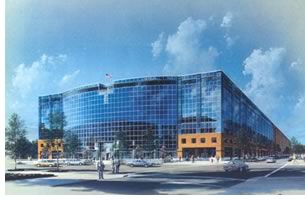 Bryant’s ties to the Washington, D.C., community run deep. Born
in Palmetto, Ga., he graduated from the national capital city’s
Armstrong Technical High School and went on to receive his BArch from
Howard University in 1954. Upon graduation, he was commissioned as an
engineering officer in the U.S. Air Force and served in England, where
he studied Modern architecture. He then continued as an architect in
private practice and government service at the Veterans Administration
and the General Services Administration. He opened his own practice as
Charles Irving Bryant Architects in 1965, and four years later the firm
became Bryant & Bryant when his bother Robert joined the partnership.
In 1976 the 50-person company was cited in Black
Enterprise Magazine as the largest African American-owned firm and one of the top-ranked
black-owned businesses in the nation based on annual revenue.
Bryant’s ties to the Washington, D.C., community run deep. Born
in Palmetto, Ga., he graduated from the national capital city’s
Armstrong Technical High School and went on to receive his BArch from
Howard University in 1954. Upon graduation, he was commissioned as an
engineering officer in the U.S. Air Force and served in England, where
he studied Modern architecture. He then continued as an architect in
private practice and government service at the Veterans Administration
and the General Services Administration. He opened his own practice as
Charles Irving Bryant Architects in 1965, and four years later the firm
became Bryant & Bryant when his bother Robert joined the partnership.
In 1976 the 50-person company was cited in Black
Enterprise Magazine as the largest African American-owned firm and one of the top-ranked
black-owned businesses in the nation based on annual revenue.
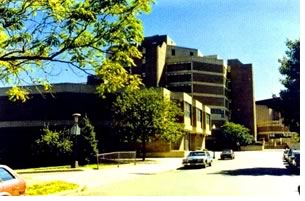 Global influence
Global influence
Bryant’s Washington-based practice made its mark worldwide, including
master-planning projects in Guyana, South Africa. The firm’s other
prominent projects include the Potomac Mills Mall, Woodbridge, Va.; the
Stadium Armory Metro Station for the Washington Metropolitan Area Transit
Authority; and the Washington Design Center, which received an AIA Honor
Award. “He spoke up for African American architects everywhere,” Purnell
recalls, “He was a successful businessperson, a gentleman, always
courteous, and had a good sense of humor.”
After Robert’s death in 1995, the firm transitioned into a private corporation. Now, the organization reports, The Bryant & Bryant firm passes into the hands of a second generation that Bryant had been carefully grooming for the past decade. This principally includes his son, Charles “Chuck” Bryant II, a 1987 graduate of Virginia Tech, and several other long-time partners in the firm.
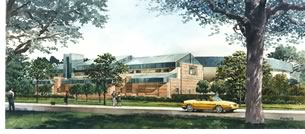 As much as Bryant contributed to his profession, he also contributed
to his community. He was president of the D.C. Architects Registration
Board and the D.C. Frontiers International and was a member of the board
of the Girl Scouts Council of the National Capital and the D.C. Private
Industry Council. In addition to son, Chuck, Bryant is survived by Waveney,
his wife of 53 years, and daughters Shawne Bryant and Shelley Plass.
As much as Bryant contributed to his profession, he also contributed
to his community. He was president of the D.C. Architects Registration
Board and the D.C. Frontiers International and was a member of the board
of the Girl Scouts Council of the National Capital and the D.C. Private
Industry Council. In addition to son, Chuck, Bryant is survived by Waveney,
his wife of 53 years, and daughters Shawne Bryant and Shelley Plass.
Copyright 2005 The American Institute of Architects.
All rights reserved. Home Page ![]()
![]()
 |
||
|
||